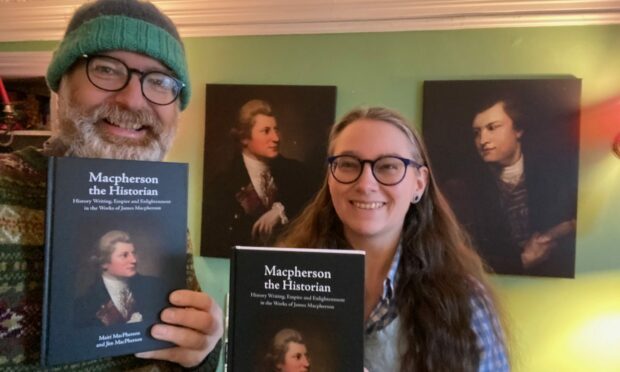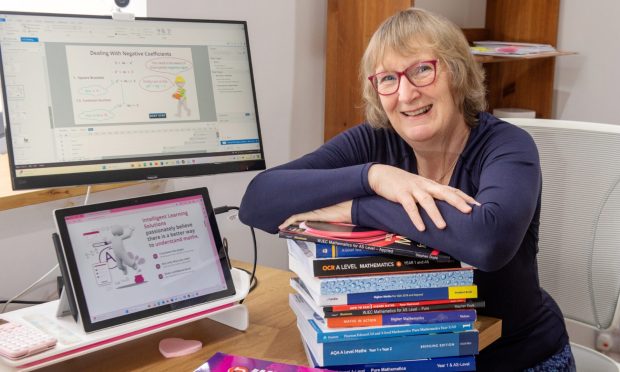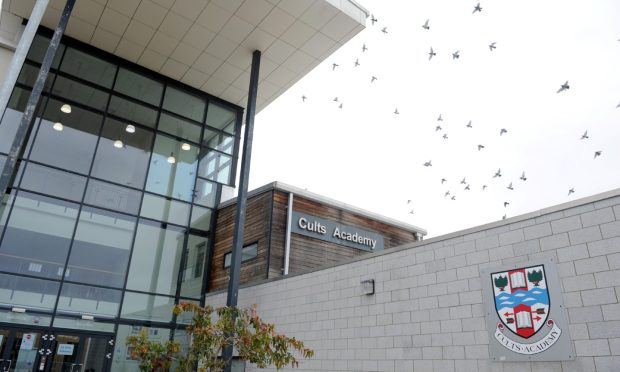Legend has it that Napoleon was so taken by the works of James “Ossian” Macpherson that he even carried his poetry into battle.
But however popular–and controversial–Macpherson’s poetry may have been, it wasn’t the extent of his talents. In fact, two Badenoch-based historians are making the case that it’s time to look beyond Ossian and start taking James more seriously.
Drs Mairi and Jim MacPherson’s new book, “Macpherson the Historian”, situates James Macpherson as a leading figure in the Enlightenment. During his life and career which spanned from 1736–1796, the Gaelic speaker from Badenoch was obsessed with history, they argue.
It powered his politics, his writings and even his famous Ossian cycle of epic poems–traditional tales which he collected and translated from the Gaelic.
And in addition to their new book, an in-depth exhibit at the Clan Macpherson Museum in Newtonmore expands on James’s story and place as a Highlander who changed the world.
It’s all in the name
James Macpherson has long been a popular, if controversial, figure. Questions over whether he collected, edited, translated, forged, or simply made up his Ossian cycle have been asked for centuries, Mairi said.
“In the Highlands, there are very few people up here who have encountered Gaelic culture who have any doubt about whether the Ossianic tales are a real thing.
“They’re not necessarily in the exact words that James chose, but the stories are there, and the characters are there. But elsewhere it’s a thing that’s still questioned and it was back then. The original debate around that was essentially a question of Gaelic identity and whether the Gaels had any culture.
“That stuff has persisted, but it’s an intriguing point in time to bring James back as not a forger but an editor of those tales.”
But there is another important reason for restarting the conversation about James, Jim added.
“Our whole point is to argue that James was a serious man of the Enlightenment. He was a serious intellectual. And we can only understand his career as a writer, and indeed even the Ossian material, if we understand him in that context.
“He was fundamentally concerned with the past.”
History has its uses
But James’s historical work wasn’t just something for the past. He was wrapped up in conversations around Scotland’s position in the Empire, and especially the importance of Highlanders and Gaelic society.
“As a Gael, your world is shaped through the past,” Mairi said.
“Up to this day, when you ask people where they’re from, they don’t always tell you their place. They tell you who their family is.
“For someone like James, a Gaelic speaker growing up in Badenoch, [taking a historical view] wasn’t unusual.”
His connections to the Macpherson clan allowed him access to sources that other history writers might not have had. While most scholarship today focusses on Ossianic poetry, Mairi said that only accounts for a small portion of James’s life and writings.
“It’s a really unusual thing in academia. The historians tend to ignore him because he’s not seen as a historian. The literature folk look at Ossian, but they don’t look at his later works.
“Most of the Ossian scholars work explicitly on Ossian and not on James.”
James, Ossian, or both?
Jim also pointed out that any cursory reading of James’s writings makes it hard to argue he isn’t working as a historian.
“He’s writing in a similar way to some of the great figures of the Enlightenment.
“But by the time we come to the 1770s, he’s writing his major works of history in a way that is comparable to the likes of Edward Gibbon and William Robertson, these two great giants of Enlightenment history writing.”
In fact, Jim said that some of James’s pamphlets were wrongly attributed to Gibbon, the Enlightenment historian well-known for “The History of the Decline and Fall of the Roman Empire.”
James’s writings are littered with footnotes and references. Overall, he used a methodology that modern-day university students would be well familiar with, Jim added.
“In no way are we making a claim that Macpherson is somehow a better historian than Gibbon. But he’s doing similar things.
“We can only understand him if we put him in that intellectual context.”
Come and see for yourself
In addition to their new book, the 21st Century MacPhersons recently redesigned the main exhibition at the Clan Macpherson Museum in Newtonmore from scratch.
Open since 1952, the Macpherson Museum remains the oldest clan museum. Mairi said that the exhibit telling James’s story is becoming a major draw.
“Theoretically, we’d like to be the one clan museum that people come to visit. So it has to be stories that are interesting to a wider audience.
“James is one of the Macphersons who changed the world. And he had such an important part to play in how people view Scotland now and what the tourists come for.”
And before you come to any conclusions about James, Mairi has a simple invitation:
“Our ultimate goal is to make people think differently. Actually read [James] and don’t just come to an opinion.”
Dr Mairi MacPherson is an academic, heritage professional and community organiser. Dr Jim MacPherson is Reader in History at the UHI Centre for History
You can order a copy of “Macpherson the Historian” from Edinburgh University Press.
The Clan Macpherson Museum is free to visit, though they do appreciate donations. Visit the museum’s website for full visiting hours and information on the exhibits.
Read more from the Schools and Family team
Maverick minister proves you can live a ‘significant’ life in the Highlands
UHI Inverness student scoops two scholarships to continue vital energy research












